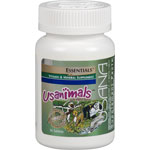Epidemic or Misdiagnosis?
In 1990, there were 900,000 children taking Ritalin. This year that number stands at more than 4 million — a cause of concern for many parents, teachers and more and more doctors. Is it an epidemic or is it being diagnosed more than it occurs? Now a new research tool may provide an answer.
One look at 6-year-old Joey and you think he’s an outgoing kid.
But when he began expressing rage and anger at age 3, a pediatric specialist observed him for one hour and gave a diagnosis.
Joey’s mother, Kendal, explains, “They gave him the severe label of severe ADHD, conduct disorder and oppositional defiance disorder.”
This mother of three was shocked. So she got a second opinion from educational psychologist Bunni Tobias, Ph.D., who feels many children are wrongly labeled.
“Labeling limits the way we look for different difficulties. It’s a stopper. It’s not an opening of the door,” says Dr. Tobais, who is touted as “The Kid’s Detective.”
More than 5 million children are currently diagnosed with ADD or ADHD. Recent reports suggest between 60 and 70 percent of those are misdiagnosed. That amount to more than 2.6 million children under treatment unnecessarily.
It turns out, for example, Joey had severe allergies and high levels of mercury in his blood. Vitamins and a special diet eliminated the emotional outbursts and the need for medication.
Kendal says, “I’m getting glimmers of this just beautiful boy.”
So what are some of the signs of ADHD? Impulsivity, forgetfulness, hyperactivity and always talking — all behaviors that are hard to measure.
Psychologist Daniel Cox, Ph.D., of the University of Virginia School of Medicine in Charlottesville, says, “What we’re trying to do is get a physical measure of this condition.”
Dr. Cox uses NASA technology to study the brain waves of children with ADHD. Electrodes are hooked up to their scalps. They watch a video for 10 minutes, rest for five, and then switch tasks.
“It’s getting engaged and transitioning or shifting from one task to another, that’s where they get into trouble,” explains Dr. Cox.
When a non-ADHD child switches tasks, there’s a shift in brain waves. With an ADHD child, the shift is more dramatic.
Dr. Cox says, “The lower the consistency the closer you get to zero and the more likely it’s ADHD.”
He is optimistic that a look inside a child’s head will lead to better diagnosis. And all of these doctors agree that Ritalin can be a miracle drug when used appropriately. Dr. Cox estimates it will be two years before his research makes it to other doctors’ offices.
USANA Vitamins products line – Usanimals are one of the most antioxidant-rich kids nutritional supplements—specifically formulated by USANA for children. Usanimals also provide a comprehensive formula of vitamins and minerals that children need during this phase of rapid growth.


